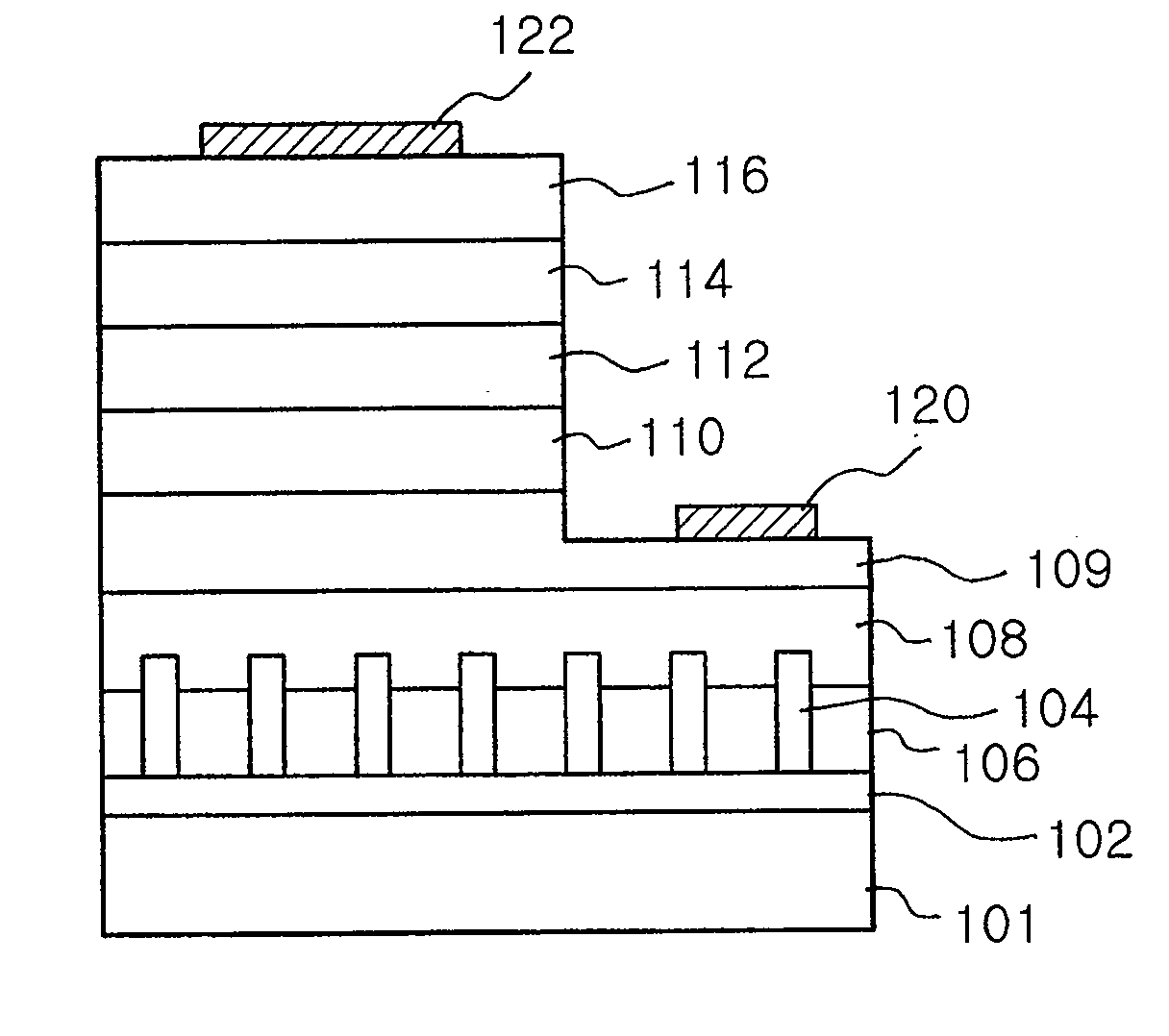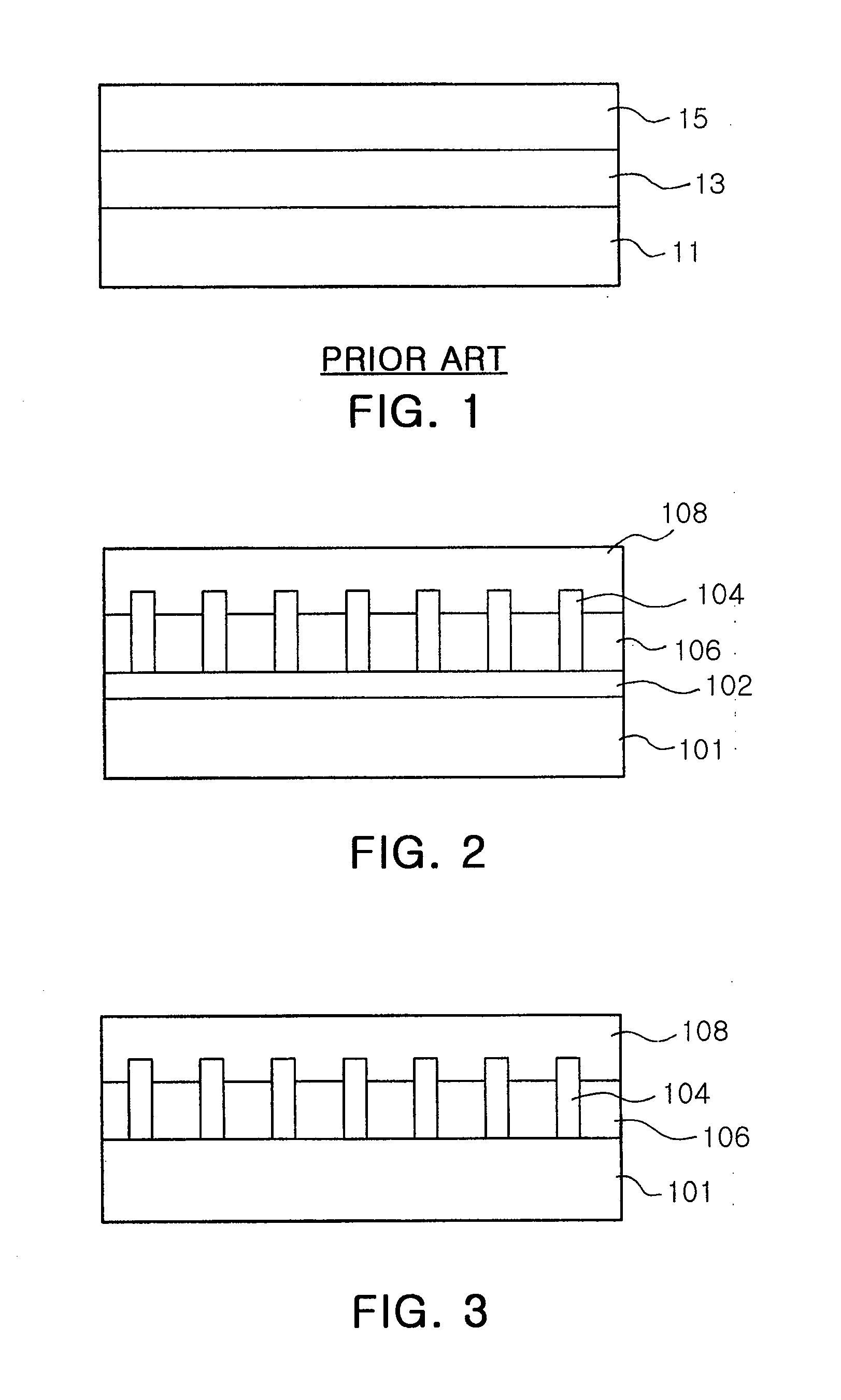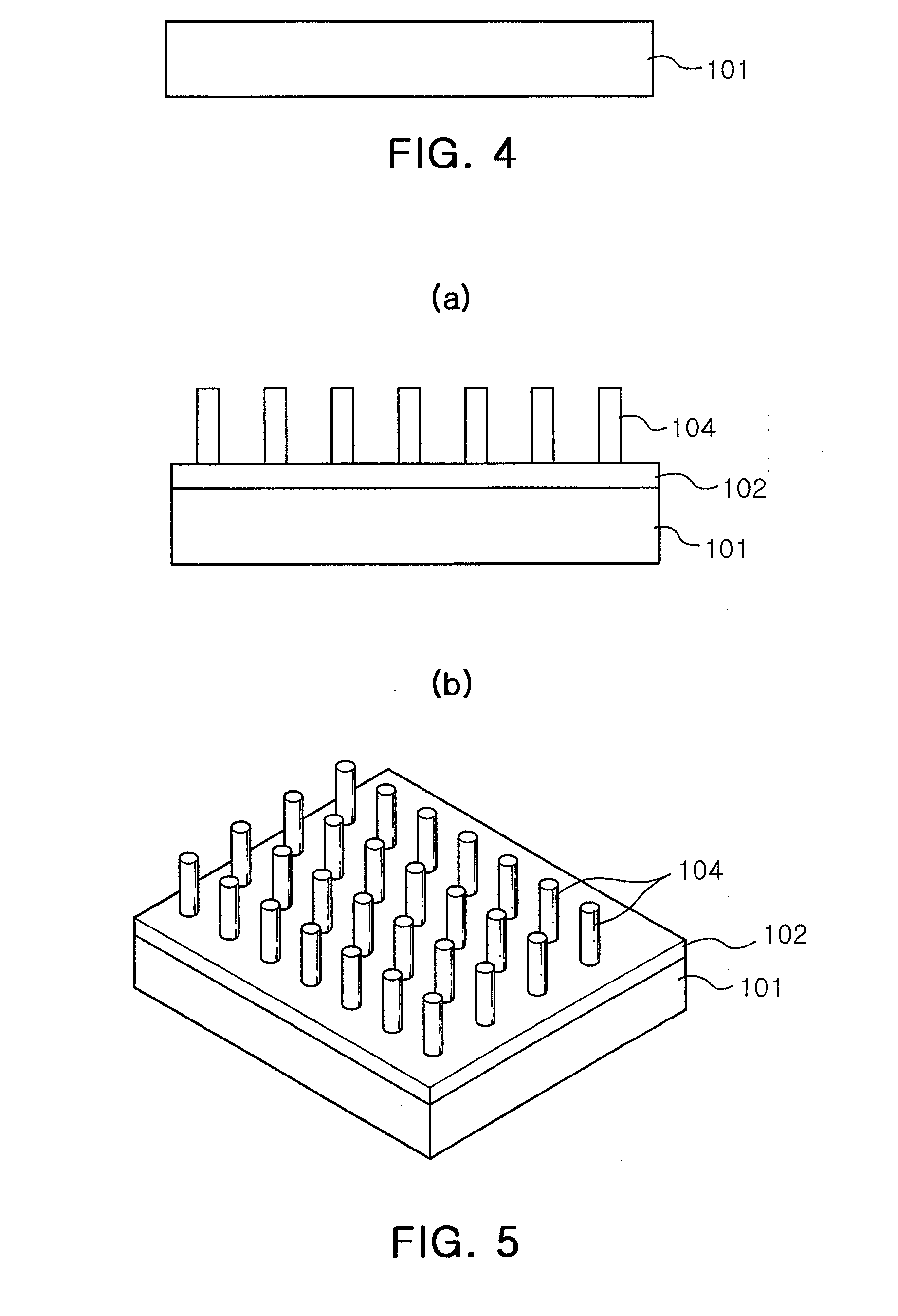Nitride based semiconductor device using nanorods and process for preparing the same
a technology of nanorods and semiconductor devices, which is applied in the direction of semiconductor devices, basic electric elements, electrical equipment, etc., can solve the problems of significant deterioration of the performance of the device manufactured using, unsuitable mass production, and difficulty in large-diameter substrate production, so as to reduce thermal stress
- Summary
- Abstract
- Description
- Claims
- Application Information
AI Technical Summary
Benefits of technology
Problems solved by technology
Method used
Image
Examples
Embodiment Construction
[0030]The present invention now will be described more fully with reference to the accompanying drawings, in which embodiments of the invention are shown. The present invention may, however, be embodied in many different forms and should not be construed as being limited to the embodiments set forth herein; rather, these embodiments are provided so that this disclosure will be thorough and complete, and will fully convey the concept of the invention to those skilled in the art. Therefore, in the drawings, shape and size of some elements may be exaggerated for clarity, and like numbers refer to like elements throughout.
[0031]FIG. 2 is a view schematically showing a cross-sectional structure of a nitride based semiconductor device in accordance with one embodiment of the present invention. Referring to FIG. 2, a ZnO buffer layer 102, obtained by low-temperature growth, was formed on a Si substrate 101. A plurality of nanorods 104 made of ZnO was aligned on the ZnO buffer layer 102 in ...
PUM
| Property | Measurement | Unit |
|---|---|---|
| temperature | aaaaa | aaaaa |
| pressure | aaaaa | aaaaa |
| temperature | aaaaa | aaaaa |
Abstract
Description
Claims
Application Information
 Login to View More
Login to View More - R&D
- Intellectual Property
- Life Sciences
- Materials
- Tech Scout
- Unparalleled Data Quality
- Higher Quality Content
- 60% Fewer Hallucinations
Browse by: Latest US Patents, China's latest patents, Technical Efficacy Thesaurus, Application Domain, Technology Topic, Popular Technical Reports.
© 2025 PatSnap. All rights reserved.Legal|Privacy policy|Modern Slavery Act Transparency Statement|Sitemap|About US| Contact US: help@patsnap.com



